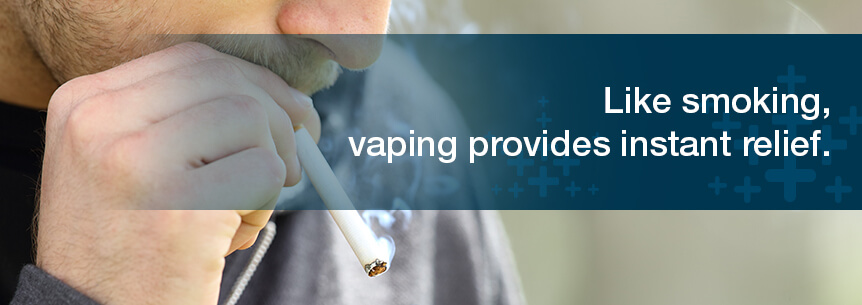Home / About Us / Guide to Medical Marijuana / Guide to Medical Marijuana – Chapter 6
Once your physician informs you medical marijuana is a treatment option for you, your next question might be “How do you ingest medical marijuana?” Not everyone is interested in the more traditional ingestion methods, such as smoking, and you might want to explore your other options for using medical marijuana before deciding there is only one choice right for you.
The good thing is there are a few options, and you don’t have to commit to one or another method right from the start. In fact, your doctor may have some suggestions about what the best way for you to ingest medical marijuana is based on your condition, lifestyle and other factors. You’ll ultimately have the final choice, within the letter of the law in your state.
Below are among the common methods for ingesting medical marijuana:
Perhaps the most widely known and recognized form of ingesting medical marijuana is smoking. It involves using dried cannabis that has either been rolled into small cigarettes, placed in a pipe or put into a bong and then smoked.
There are a few distinct advantages to smoking marijuana as the form of ingestion. These benefits include things like:
While the dosage is much easier to regulate when smoking, pipes and bongs provide the most reliable results for the dosage. Medicinal properties aren’t as quick to escape from the other end of the pipe or the bong as they are with cigarettes.
One recommendation is to start small when smoking marijuana — especially for first-time users. Inhale lightly and exhale quickly with the first hit. Give it a moment to see if you’re experiencing the desired effect. If not, consider a deeper draw. Of course, you don’t want to go into a coughing fit, so don’t draw too deeply.
While smoking does offer a practical solution for medical marijuana ingestion, it isn’t the right answer for all patients. If you have asthma, suffer from frequent respiratory infections or your doctor is treating you for lung cancer and other lung conditions, this might not be the best solution for you. This method of ingestion is not the healthiest way to consumer medical marijuana, because in order to smoke medical marijuana, you must burn it and it produces waste products. The tar and other waste products are inhaled into your lungs and throat, which can affect the mucous membranes that protect your organs. Further, the dry air from inhaling can dry out these mucous membranes further, making your for susceptible to infection.
Another consideration is the smoke clings to your hair, skin, clothing and objects in your home if you smoke inside. Some people don’t want the smell of any smoke to follow them.
Fortunately, for those who find smoking an unattractive choice for ingesting medical marijuana, there are other alternatives to consider.
Another popular, fast-acting option for taking your medicine is to use a vaporizer. Vaping involves preheating the device to the prescribed temperature, inserting a small amount of cannabis flower into the “vape” and then inhaling.
Much like with smoking, you don’t want to inhale too deeply at first as it could result in a coughing fit. Plus, you can always take a deeper hit later if the initial hit doesn’t do the trick for you.

The primary benefit is the speed of use. Like smoking, vaping provides instant relief — minus the time required to heat up the vaporizer. However, it is not quite as damaging the lungs as smoking can be, and it doesn’t provide the same lingering odor smoking medical marijuana leaves behind.
It’s important to consider a few potential negatives before deciding if this is the right choices for you. First, vaping devices can be costly. Further, vaping can be difficult if you’re inexperienced when it comes to consuming medical marijuana. The effects can be intense for individuals aren’t sure what to expect.
Edibles provide a viable solution for many people who have an aversion to inhaling medical marijuana. But there are many benefits to consider when it comes to this method of ingestion — the first of which is the most pleasant.
It feels like you’re getting a treat — it doesn’t feel like you’re taking medicine at all when it’s disguised as one of the following:
This form of ingesting medical marijuana is especially popular among children and elderly patients, but there are some downsides to consider as well.
One of the primary considerations is it can take quite a few hours for the effects to kick in. Therefore, you should start slowly with edibles and increase dosages as needed over time.
Additionally, because edible marijuana products look like treats, you must take great care to lock your edible medical marijuana away from children and pets.
You should also be aware that the feelings associated with edibles are different than those associated with smoking medical marijuana. Once they kick in, some people feel the effects with edibles are even stronger than with inhaled products.
Tinctures offer their own variety of options for ingesting medical marijuana. You will find many kinds of tinctures, including those that can be applied topically to the skin or can be taken orally — either by placing drops under the tongue or adding to a cup of hot tea.
Tinctures also offer a few benefits, including the fact they are faster acting than most edible solutions, though not quite as quick as inhaled varieties. Other benefits of tinctures include:
In small doses, tinctures can even be quite affordable. However, for those who require higher doses of cannabis, the costs of tinctures can add up fast. Most people, in the beginning, only need a few drops of tinctures to feel the effect — or a short spray if using a sprayable. Start small and work your way up to ensure you don’t get too much at one time.
For some medical marijuana patients, traditional methods of administering the required dose are difficult, if not impossible to do. This can be the case for some Alzheimer’s patients as well as others. Oils and concentrates present an attractive option because it isn’t something smoked. They are also not applied topically or taken orally.
Instead, concentrates are cooked in with the foods in the forms of marijuana-infused cooking oils — much like olive oil or coconut oil you use when cooking. These oils can easily be added to favorite meals and desserts without patients being any the wiser.
When you consider how hard some patients fight taking medications, this can be a blessing for both the patient and the caregiver. The patient doesn’t have to experience the stress of taking traditional medication, and the caregiver can be confident their patient is getting the medication they need.
Addressing pain is one of the most common reasons physicians recommend medical marijuana. Whether the pain is from arthritis, conditions like fibromyalgia or chronic pain from old injuries, topical applications for medical marijuana provide a particularly beneficial option for pain sufferers.

You apply topicals at the point of pain. Unlike edibles, they do not need to travel throughout your body before kicking in. This means you will feel relief much faster.
Some topicals, like lotions, act faster than others. Other topical treatments, though, like patches, provide consistent relief over longer periods of time. Some patients use both patches for continuous relief and lotions for intense and immediate — although short-lived — relief.
Some people have unpleasant reactions to the patches. Mostly it’s the adhesives people are reacting to rather than the medications in the patches themselves. If you have an adverse reaction to the patch, consult your doctor to see what they suggest as an alternative.
There are a few other methods of dispensing medical marijuana to consider as well. Though not as common or popular as the methods mentioned above, some people take marijuana in the following forms:
The key to remember is medical marijuana is not a one-size-fits-all proposition. What works best for one patient may not be the best solution for you. Everyone has unique needs, different comfort levels and different ideas about what medical marijuana is and how it can be used to help relieve pain and various illnesses.
Work with your physician to find the right ingestion method for you, and don’t be afraid to ask for changes in methods or doses if your current regimen isn’t working for you. After all, the goal of taking medical marijuana is to help you feel better.